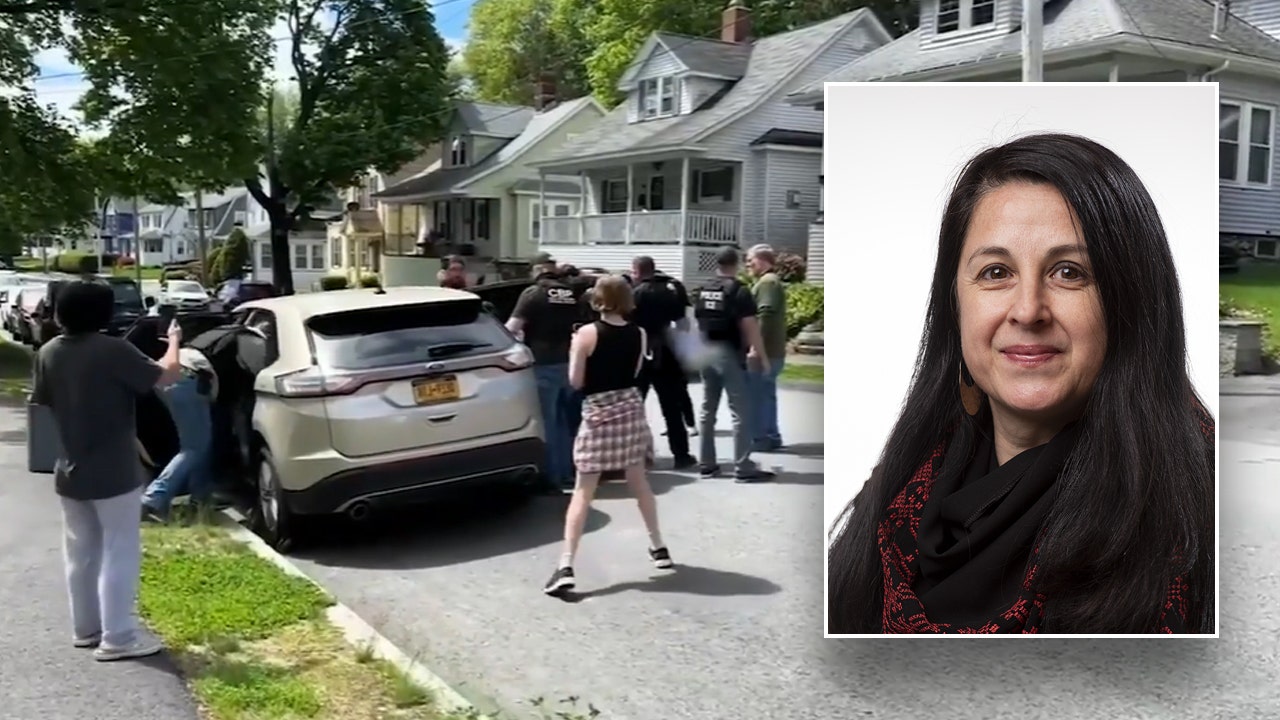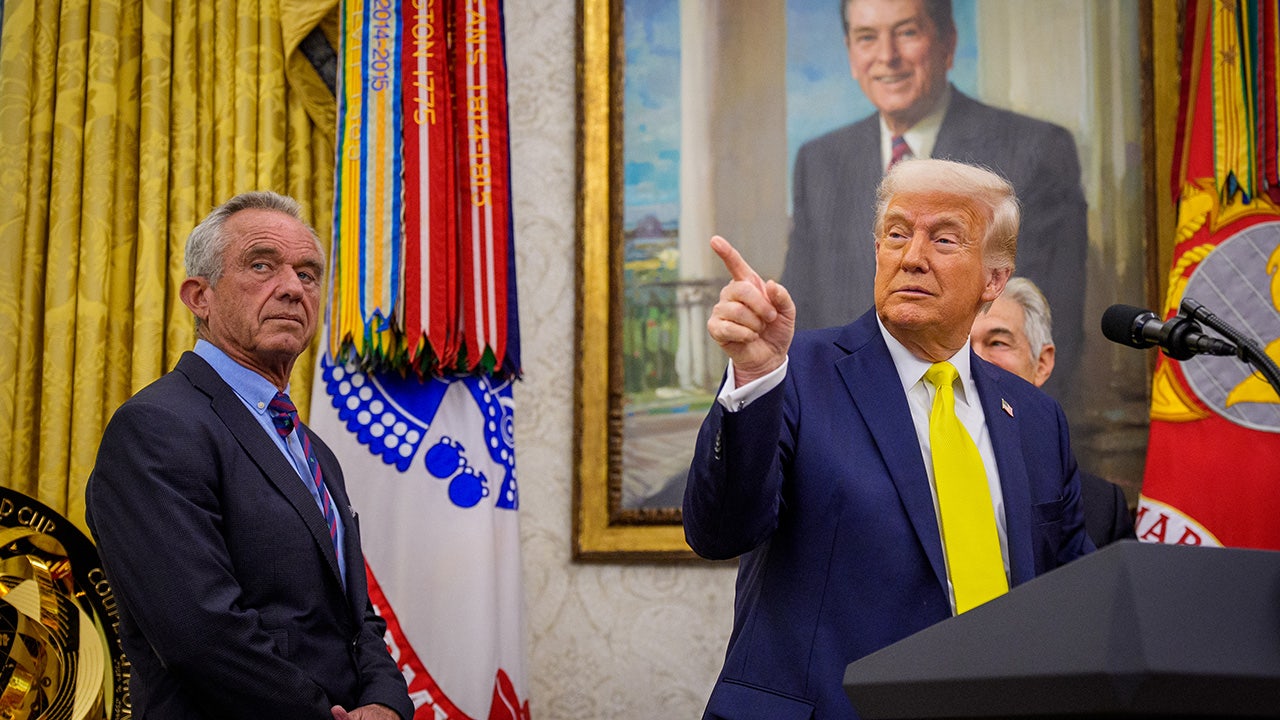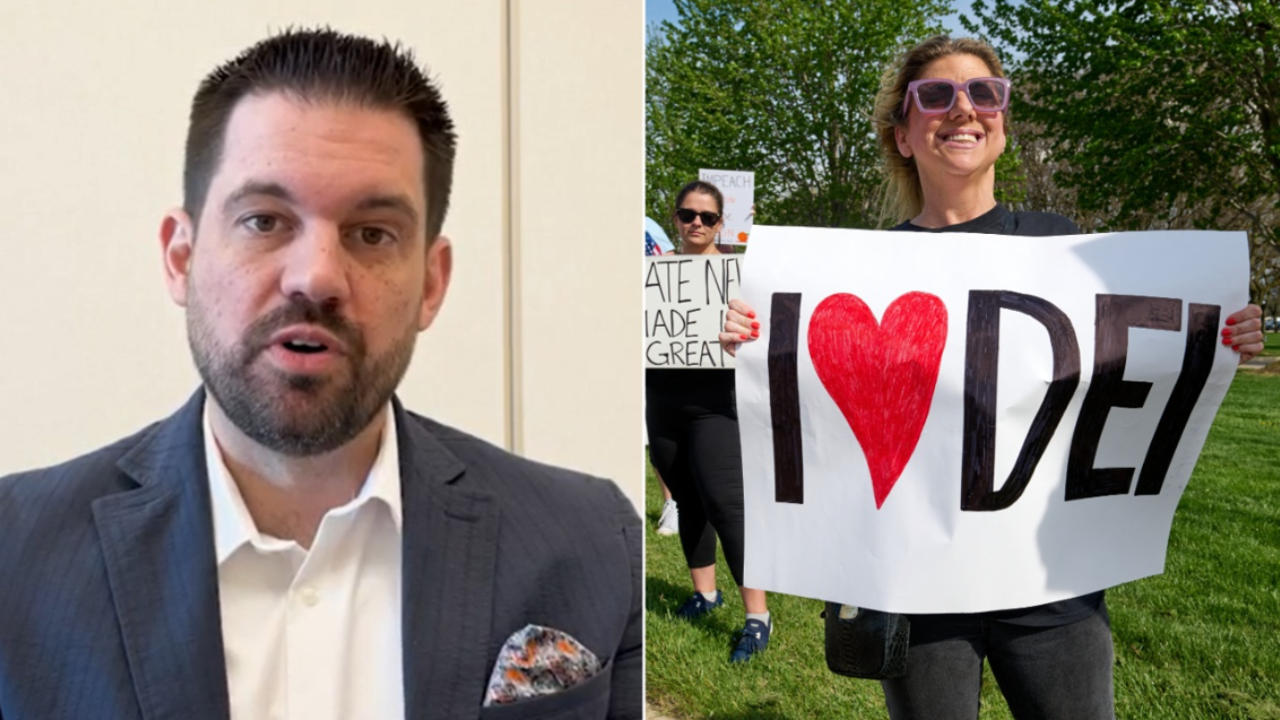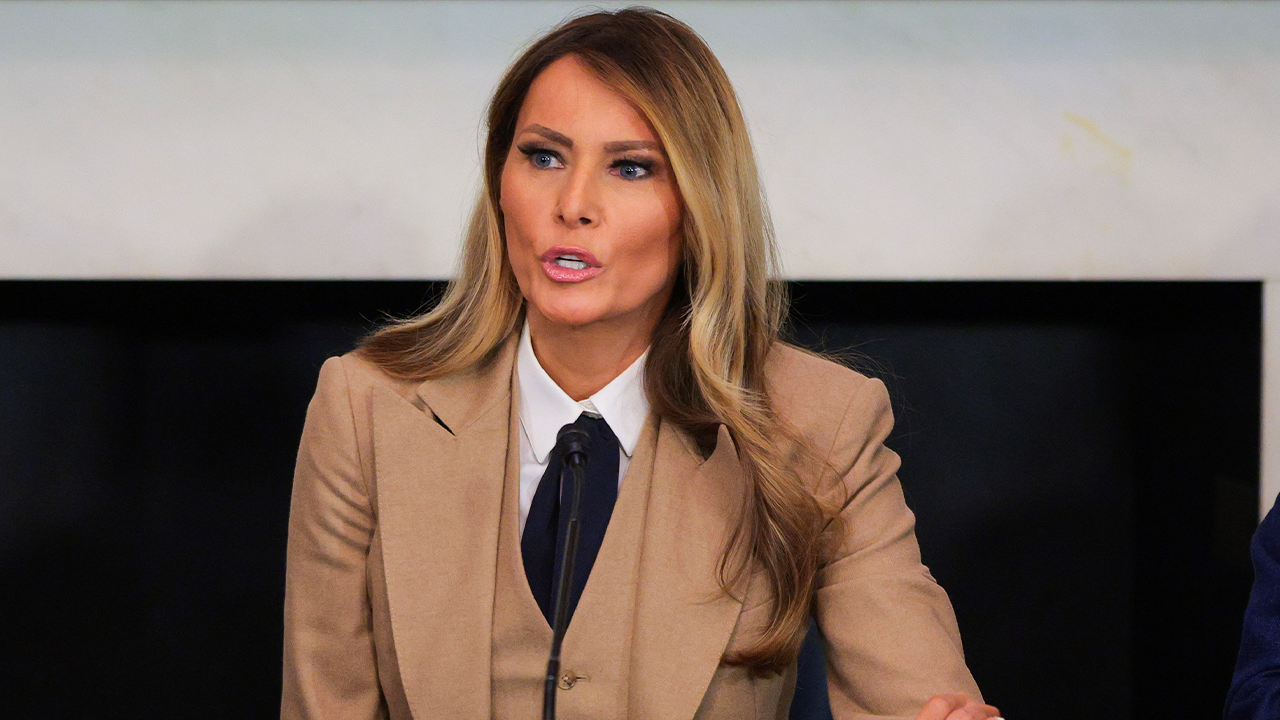Business
It’s been the year of the worker. West Hollywood employers are so over it

Across the country, many American workers have enjoyed pay hikes unlike anything seen in decades. And for many American businesses, this also has been a good year for profits, with some corporations notching record or near-record gains.
But don’t try to sing that song of good times in West Hollywood: Business owners there say that paying workers more is killing them, and that goes for some of the low-wage workers that many liberal policymakers worry about.
In an area known for its nightlife, hip restaurants, trendy shops and boutique hotels, workers at or near the minimum pay abound. And, thanks in part to the political muscle of L.A.’s hotel union and the COVID-era shakeup that gave workers greater leverage, city leaders there have approved the highest minimum wage and some of the most generous paid time off to be found anywhere in the country.
The West Hollywood rules, approved two years ago, stand in contrast to the situation in much of the country, where business leaders have successfully opposed substantial increases in minimum wages. The federal wage floor has been stuck at $7.25 an hour since 2009, and two dozen states currently are at less than $10 an hour or have no minimum wage at all.
In California as a whole, the minimum wage stands at $15.50 an hour, behind only Washington state at $15.74 and the nation’s capital at $16.50.
Many cities have their own minimum rate, and none higher than West Hollywood, where it’s now $19.08 an hour, with paid leave even for part-time staff.
Economists have long argued over what effect minimum wage rules have on jobs. Conservatives have generally maintained that requiring higher minimum pay leads employers to reduce hiring. Liberal economists have denied such a link in all but theory and some rare exceptions.
For restaurateur Craig Susser and other employers like him, that theoretical point of no return has been reached in West Hollywood. Susser, the owner of Craig’s and Craig’s Vegan, said he has reduced the number of servers from 12 to nine, sometimes eight. Other employers have cut worker hours. Many have jacked up their prices.
And by the city’s count, a sizable 177 businesses have closed since 2021, although exit interviews suggest a multitude of reasons, including labor costs, but also inflation more broadly and challenges posed by leases, entertainment industry strikes and changes in consumer behavior post-COVID crisis, according to Laura Biery, West Hollywood’s economic development director.
Things have gotten so desperate, some employers say, that in a year when picketing workers have become commonplace and autoworkers, screenwriters and health workers have struck for significant gains, in West Hollywood, it’s bosses who’ve been holding up signs and marching in protest.
“For God’s sake, give us a break,” said Genevieve Morrill, president of the West Hollywood Chamber of Commerce.
Until relatively recently West Hollywood had followed the state’s minimum wage, which has been rising every year since 2017, mostly by a dollar at a time, to its $15.50 level today.
But that all changed at the start of 2022. Since then West Hollywood’s wage hikes have been extraordinary — more than $6 an hour for small businesses and $5 for larger ones in a span of just 2½ years.
Even some liberal economists are cringing a bit. “That’s such a substantial increase,” said Harry Holzer, a Georgetown public policy professor and the Labor Department’s chief economist in the Clinton administration. He added that bigger increases matter more in the long haul.
West Hollywood businesses are having an even harder time swallowing the city’s paid time off rule that was part of the minimum wage ordinance. That requires employers to provide 12 days of compensated leave per year for full-time employees, at least half in vacation or personal time off and the rest in sick leave.
Part-timers also qualify on a prorated basis. And upon separation, all employees must be paid for unused vacation or personal leave, something neither the state nor any other city is thought to mandate.
Labor proponents have argued that even $19 an hour isn’t enough to live in expensive L.A. and that the rapid jump in West Hollywood’s minimum wage came after years in which its pay rate trailed that of Los Angeles and neighboring cities. Now, “it’s on the cutting edge of this important debate” over living wages, said Danielle Wilson, political coordinator of Unite Here Local 11. The union has been striking hotels across Southern California since summer and had an influential role in pushing through the West Hollywood pay increases.
Wilson said businesses in West Hollywood can afford it. And some certainly can. Many workers were already making $19 or more an hour, thanks to the labor market upheaval and tight worker supply caused by the pandemic.
Nor has it stopped new startups. This year more businesses have opened in West Hollywood than have closed, records show. Mario Vollera and his partners are gearing up to open Southern California’s second Roosterfish bar in West Hollywood, in the space where reality TV star Lisa Vanderpump had once operated her restaurant lounge. “I’m not that concerned,” he said of West Hollywood’s pay rules.
The city of about 35,000 is part of L.A.’s affluent Westside, home to the Sunset Strip, and its area of 1.9 square miles is chock-full of swanky bars, dance clubs and celebrity hideaways. But although a sliver of West Hollywood touches Beverly Hills, the cities are quite different in demographics and wealth. West Hollywood’s residents are more transient and household incomes and housing values aren’t far off from L.A. County’s averages, census data show. Most workers are employed by small service employers.
The irony is that a Starbucks in West Hollywood now has to pay its employees at least $19.08 an hour, but another one down the road on Sunset Boulevard in Beverly Hills could, at least legally, bring on a worker at the state’s minimum of $15.50. (The current minimum wage for the city of L.A. is $16.78, and it’s $16.90 for Santa Monica.)
“Beverly Hills is actually looking pretty competitive and cheaper than West Hollywood,” said the chamber’s Morrill, letting out a chuckle.
She said it’s doubly hard for employers because the city’s socially progressive history and support for labor have made them reluctant to stick their heads out and complain publicly.
“I’m definitely in support of people making more money,” said one longtime restaurant owner who asked that he remain anonymous. “But it’s going to end up hurting the people it’s intended to help.”
This business owner was one of 21 employers that received a temporary exemption from the paid-leave rules, after supplying proof that the rules would lead to a substantial cut in staff or work hours.
Other employers and their supporters, about 30 in all, took to the streets on Thanksgiving week and marched to West Hollywood’s city hall. Their demands: a long pause on future minimum wage increases; a new minimum rate for tipped employees, some of whom employers say make much more than a living wage; and a rescission of the paid leave provision for part-time employees.
West Hollywood’s City Council responded by giving employers relief on an annual business tax and parking and outdoor dining fees, totaling about $2.5 million, and said it would conduct a survey of businesses and consider amendments, but it made no time commitments.
Just how West Hollywood became, almost overnight, the minimum wage leader in part reflects a labor revival after decades of stagnant incomes and pandemic-induced anger that manifested itself in the Great Resignation and worker shortages. Low-wage workers have seen the biggest gains.
West Hollywood labor had a powerful ally in Local 11, which maximized the moment by using its broader political leverage to lean on city officials, according to knowledgeable sources. And what initially began as an effort targeting hotels morphed into an expansive ordinance that passed on a late November 2021 night.
Employers say they were blindsided by the new rules. And while experts say that the changes, on the whole, may not make a big difference for employment, they could for businesses on the margins. More than many others, West Hollywood depends on hospitality businesses, which are labor-intensive and tend to come and go. Some say they may move or expand elsewhere. Others may adopt labor-saving strategies, such as more automation, or simply make do with fewer employees.
“People think of it as a free lunch, but you have to pay for it somewhere,” said David Neumark, a UC Irvine economist who has long studied the effects of minimum wage increases.
“The workers who get higher wages and keep their jobs and hours — they’re better off,” he said. “It’s workers who lose their jobs and hours. There’s the tradeoff.”

Business
Commentary: Who's responsible for the aviation mess? Transportation Secretary Duffy says it's everyone but him

Picking out the worst performer among Donald Trump’s Cabinet appointees is a tough job — it’s a competitive race, after al l— but one member who deserves to be in the running by almost any measure of incompetence is Sean Duffy, the secretary of Transportation.
Duffy is a classic example of someone who knows who’s responsible for the screwups on his watch, and it’s never him.
He has spent the last weeks and months blaming the Biden administration for numerous operational failures in our air traffic system since he took over. Those include the Jan. 29 midair collision over Washington, D.C., that cost 67 air passengers their lives, as well as several near-misses on the ground.
I think we need to be a little bit more precise in downsizing a department with a mission as critical as DOT’s.
— Rep Steve Womack (R-Ark.)
Some Trump Cabinet members have more important portfolios than Duffy —Homeland Security Secretary Kristi Noem and Defense Secretary Pete Hegseth, neither of whom has displayed anything approaching basic competence at their job, come immediately to mind.
But the American public is bound to be particularly sensitive to the functioning of our transportation infrastructure. That’s especially true when it comes to the safety and reliability of air travel; every flight delay and safety-related mishap hits American travelers in the gut.
The highest-profile failure (so far) is the disaster named Newark Liberty International Airport, where flight delays can last for the better part of a day and questions about safety are rife.
Duffy, a former reality show contestant and four-term congressman, comes to the blame game with dirty hands. Let’s take a look.
First, here’s what he’s said about the condition of FAA operations and staffing.
“I think it is clear that the blame belongs with the last administration,” he said Monday during a news conference at DOT headquarters. “Pete Buttigieg and Joe Biden did nothing to fix the system that they knew was broken.” He said, “During COVID, when people weren’t flying? That was a perfect time to fix these problems.”
A couple of points are pertinent here. First, in 2019, when Duffy was a Republican member of Congress from Wisconsin, the bill to fund the Department of Transportation among other agencies came before the House. Duffy voted against it. So did 179 other members of the GOP caucus; 12 Republicans joined the Democrats to pass the measure.
Second, the pandemic year in which “people weren’t flying” was 2020. That year, the domestic passenger count plummeted to 369.4 million from 926.7 million the previous year. It was the lowest figure since 1984.
Who was president in 2020? Not Biden, but Donald Trump.
After 2020, passenger loads crept back up, reaching 666.2 million in 2021 and continuing higher to the record of 982.7 million last year. If there was an opportunity to upgrade the air traffic system at the least inconvenience to passengers, it was 2020. But nothing was done then, on Trump’s watch.
I asked the Department of Transportation last week if Duffy could reconcile these evidently misleading and inconsistent statements. I’m still waiting for a reply.
Duffy has maintained that it’s still safe to fly in and out of Newark, despite outages during which air traffic controllers’ screens went black and radios went silent — for 30 seconds on April 28 and 90 seconds on May 9. A backup system failed at the airport May 11 for 45 minutes, causing delays and cancellations for hundreds of flights.
Duffy admitted to the right-wing radio host David Webb on May 12 that he had switched his wife’s flight reservation for the next day from Newark to LaGuardia airport. He subsequently explained that he didn’t say to do so because he thought Newark was unsafe, but to spare her a long delay. In other words, he had found a solution for his family, but not for the overall traveling public, which didn’t speak well for his management of the mess at Newark.
It’s proper to note that the Federal Aviation Administration has been in an operational funk for years. Duffy can try to blame Biden, but that’s a smokescreen. During Trump’s first term, when the FAA’s problems were well known, hiring and deployment of air traffic controllers actually shrank from the level during the Obama administration according to the DOT’s inspector general, to the point where staffing “could not keep pace with attrition.”
In the first budget he submitted after taking office in 2017, Trump proposed slashing the DOT budget by 13%. The budget plan called for cutting 30,000 workers from the FAA staff.
The problems date back even further — at least to 1981, when Ronald Reagan fired 11,000 air traffic controllers at a single blow to break their union. A frenzy of hiring and training followed, but the replacement cohort has passed its retirement age. The FAA is currently about 3,000 controllers shy of its target staffing, so the people on the job are stretched to their breaking point.
It isn’t as if Trump and Duffy pulled out all the stops to fix the FAA’s chronic problems upon taking office. Some 3,000 “probationary” employees at the agency were fired during a DOGE rampage, according to a count by the Professional Aviation Safety Specialists, the union representing safety and technical workers at the FAA, and a statement by Rep. Steve Womack (R-Ark.), chair of the subcommittee overseeing the Transportation Department budget. The probationary firings and two subsequent rounds of buyouts will bring staffing at the DOT down by 12% since Trump took office.
During appearances last week before the House and Senate appropriations committees, Duffy boasted about saving taxpayers nearly $10 billion during the first 100 days of the Trump administration. That provoked Womack to riposte, “I think we need to be a little bit more precise in downsizing a department with a mission as critical as DOT’s. … The question is pretty simple: How many departures can you handle without eroding the ability to carry out a safe and effective mission?”
“We can do more with less, Mr. Chairman,” Duffy replied. When staff accept buyout offers to retire or resign, he said, “we should take them up on that. … If I have people who don’t want to be there, let’s get some people in who are hungry to do the work.” Indeed, after the first round of firings at the FAA, DOGE boss Elon Musk issued a public appeal that air traffic controllers who had “retired, but are open to returning to work, please consider doing so.”
Furthermore, Trump’s freeze on disbursement of funds from Biden’s Infrastructure Investment and Jobs Act and Inflation Reduction Act encompassed modernization projects at airports nationwide.
Musk’s fingerprints were also on the resignation of FAA Administrator Michael Whitaker, a former airline executive and former FAA deputy administrator who had been unanimously confirmed to a five-year term in October 2023. Whitaker resigned as of Jan. 20 after clashing with Musk over the FAA’s oversight of SpaceX, which Musk owns.
Trump has nominated Republic Airways Chief Executive Bryan Bedford as his replacement, but Bedford hasn’t been confirmed.
During his Senate appropriations committee testimony on Thursday, Duffy maintained that his budget cuts and firings hadn’t compromised safety at all. He specifically denied that any air traffic controllers had been fired or offered buyouts.
Unfortunately for Duffy, Sen. Patty Murray (D-Wash.), a lawmaker whose mild demeanor masks her habit of coming to a debate with hard information in hand, was in the room. She listed for Duffy all the steps he had taken that had caused “unacceptable chaos” in the air transport system.
Since Jan. 20, she said, “virtually every dollar and transportation project has been held up at some point. You are causing a traffic jam, from freezing funding for projects to creating new hurdles by reevaluating grants that had already been approved, adding red tape by forcing unacceptable political demands on state and local transportation agencies, and outright canceling and cutting grants. … No prior Transportation secretary has cut funding for previously awarded grants in this manner.”
As for Duffy’s blaming the Biden administration “for absolutely everything,” Murray continued, “the last administration did not make the decision to hold up thousands of grants, had nothing to do with the new red tape that you have created, and certainly did not let go of hundreds of staff to help get those grants out the door.”
Turning to Duffy’s assertion that no air traffic controllers had been fired or bought out, Murray told him, “While you talk about modernizing the air traffic control system, you have forced out more than 2,000 FAA employees who support those air traffic controllers — the technicians, the mechanics, the engineers, the IT specialists at the FAA who were working on modernization.”
Duffy, indeed, stepped on his own arguments. He complained that the Biden administration had saddled him with some 3,200 contracts that had been awarded but needed to be signed. But he acknowledged that he had to go through those contracts to eliminate provisions he thought smacked of “wasteful DEI and climate requirements.” These are ideological shibboleths and by no means “wasteful,” since DOT projects have manifest effects on the welfare of residents in the communities where they’re built or planned and on climate change itself.
As it happens, on April 24, Duffy sent a letter to all recipients of DOT funds —effectively virtually every state and thousands of local jurisdictions, warning them that pursuing “DEI goals … violates federal law.” He threatened explicitly to withhold DOT funding from jurisdictions that fail to cooperate with federal immigration authorities. This is the “red tape” that Murray referenced.
Whether DEI programs and failures to cooperate with federal immigration roundups really violate federal law, as Duffy asserted, is not remotely a settled legal question, but the matter is before federal judges across the land. The fact that Duffy is wasting his time by making these threats and combing through awarded contracts to ferret out such putative violations is, however, a settled question: Of course he is.
It may not be long now before Duffy’s ideological vetting of transportation contracts and his decimation of the working staff at the FAA cause even greater disruptions in the air and on land, potentially with fatal consequences. His efforts to blame everyone else for his own failures are sure to have a very short half-life. Raise your tray tables and your reclining seats, and fasten your seat belts. We may be coming in for a hard landing.
Business
23andMe sells gene-testing business to DNA drug maker Regeneron

Bankrupt genetic-testing firm 23andMe agreed to sell its data bank, which once contained DNA samples from about 15 million people, to the drug developer Regeneron Pharmaceuticals for $256 million.
The sale comes after a wave of customers and government officials demanded that 23andMe protect the genetic data it had built up over the years by collecting saliva samples from customers.
Regeneron pledged to comply with 23andMe’s privacy policy, which allows customers to have their personal information deleted upon request.
“We have deep experience with large-scale data management,” Regeneron co-founder George D. Yancopoulos said in a statement. The company “has a proven track record of safeguarding the genetic data of people across the globe, and, with their consent, using this data to pursue discoveries that benefit science and society.”
23andMe filed for bankruptcy in March after failing to generate sustainable profits by providing medical and ancestry-related genetic testing to more than 15 million customers.
About 550,000 people had subscribed to the company’s two primary services, which hasn’t been enough to keep the company afloat. One of those services, Lemonaid Health, was not part of the sale and will be wound down, 23andMe said in a statement.
As part of 23andMe’s Chapter 11 bankruptcy, a judge approved the appointment of a privacy ombudsman to monitor the sale process and ensure compliance with privacy policies related to the genetic material submitted by customers.
That material, and the genetic data it produced, was 23andMe’s most valuable asset. The company has said any buyer must comply with current privacy protections and federal regulations.
Regeneron said it will continue to run 23andMe’s personal genomic services once the sale closes. The judge overseeing the bankruptcy must approve the sale before it can be completed.
In the months leading up its bankruptcy, 23andMe tried to attract a buyer while struggling to end a class-action lawsuit related to a 2023 data breach that gave hackers access to customer information. The company will try to resolve those claims as part of the bankruptcy.
The case is 23andMe Holding Co., number 25-40976, in the U.S. Bankruptcy Court for the Eastern District of Missouri.
Church and Smith write for Bloomberg.
Business
Edison’s safety record declined last year. Executive bonuses rose anyway

The state law that shielded Southern California Edison and other utilities from liability for wildfires sparked by their equipment came with a catch: Top utility executives would be forced to take a pay cut if their company’s safety record declined.
Edison’s safety record did decline last year. The number of fires sparked by its equipment soared to 178, from 90 the year before and 39% above the five-year average.
Serious injuries suffered by employees jumped by 56% over the average. Five contractors working on its electric system died.
As a result of that performance, the utility’s parent company, Edison International, cut executive bonuses awarded for the 2024 year, it told California regulators in an April 1 report.
For Edison International employees, planned executive cash bonuses were cut by 5%, and executives at Southern California Edison saw their bonuses shrink by 3%, said Sergey Trakhtenberg, a compensation specialist for the company.
But cash bonuses for four of Edison’s top five executives actually rose last year, by as much as 17%, according to a separate March report by Edison to federal regulators. Their long-term bonuses of stock and options, which are far more valuable and not tied to safety, also rose.
Of the top five executives, only Pedro Pizarro, chief executive of Edison International, saw his cash bonus decline. He received a cash bonus of 128% of his salary rather than the planned 135% because of the safety failures, the company said, for total compensation including salary of $13.8 million.
The cash bonuses increased for the other top four executives despite the safety-related deductions because of how they performed on other responsibilities, said Trakhtenberg, Edison’s director of total rewards. He said bonuses would have been higher were it not for safety-related reductions.
“Compensation is structured to promote safety,” Trakhtenberg said, calling it “the main focus of the company.”
Consumer advocates say the fact that bonuses increased in spite of the decline in safety highlights a flaw in AB 1054, the 2019 law that reduced the liability of for-profit utility companies like Edison for damaging wildfires ignited by their equipment.
AB 1054 created a wildfire fund to pay for fire damages in an effort to ensure that utilities wouldn’t be rendered insolvent by having to bear billions of dollars in damage costs.
In return, the legislation said executive bonus plans for utilities should be “structured to promote safety as a priority and to ensure public safety and utility financial stability.”
“All these supposed accountability measures that were put into the bill are turning out to be toothless,” said Mark Toney, executive director of The Utility Reform Network, a consumer advocacy group in San Francisco.
“If executives aren’t feeling a significant reduction in salary when there is a significant increase in wildfire safety incidents,” Toney said, “then the incentive is gone.”
One of the executives who received an increased cash bonus was Adam Umanoff, Edison’s general counsel.
Umanoff was expected to get 85% of his $706,000 salary, or $600,000, as a cash bonus as his target at the year’s beginning. The deduction for safety failures reduced that bonus, Trakhtenberg said. But Umanoff’s performance on other goals “was significantly above target” and thus increased his cash bonus to 101% of his salary.
So despite the safety failures, Umanoff received a cash bonus of $717,000, or 19% higher than he was expected to receive.
“If you can just make it up somewhere else,” Toney said, “the incentive is gone.”
The utility recently told its investors that AB 1054 will protect it from potential liabilities of billions of dollars if its equipment is found to have sparked the Eaton fire on Jan. 7, resulting in 18 deaths and the destruction of thousands of homes and commercial buildings.
The cause of the blaze, which videos captured igniting under one of Edison’s transmission towers, is still under investigation. Pizarro has said the reenergization of an idle transmission line is now a leading theory of what sparked the deadly fire.
The 2019 legislation was passed in a matter of weeks to bolster the financial health of the state’s for-profit electric companies after the Camp fire in Butte County, which was caused by a Pacific Gas & Electric transmission line.
The wildfire destroyed the town of Paradise and killed 85 people, and the damages helped push PG&E into bankruptcy.
At the bill-signing ceremony, Gov. Gavin Newsom touted its language that said utilities could not access the money in a new state wildfire fund and cap their liabilities from a blaze caused by their equipment unless they tied executive compensation to their safety performance.
In April, Edison filed its mandatory annual safety performance metrics report with the Public Utilities Commission as it seeks approval to raise customer electric rates by more than 10% this year.
In the report, Edison said that because its safety record worsened in 2024 on certain key metrics, its executives took “a total deduction of 18 points” on a 100-point scale used in determining bonuses.
“Safety and compliance are foundational to SCE, and events such as employee fatalities or serious injuries to the public can result in meaningful deduction or full elimination” of executive incentive compensation, the company wrote.
Edison didn’t explain in the report what an 18-point deduction meant to executives in actual dollar terms, another point of frustration with consumer advocates trying to determine if executive compensation plans genuinely comply with AB 1054.
“Without seeing dollar figures, it is impossible to ascertain whether a utility’s incentive compensation plan is reasonable,” the Public Advocates Office at the state Public Utilities Commission wrote in a 2022 letter to wildfire safety regulators.
To try to determine how much the missed safety goals actually impacted the compensation of Edison executives last year, The Times looked at a separate federal securities report Edison filed for investors known as the proxy statement.
In that March report, Edison detailed how the majority of its compensation to executives is based on its profit and stock price appreciation, and not safety.
Safety helps determine about 50% of the cash bonuses paid to executives each year, the report said. But more valuable are the long-term incentive bonuses, which are paid in shares of stock and stock options and are based on earnings.
The Utility Reform Network, which is also known as TURN, pointed to those stock bonuses in a 2021 letter to regulators where it questioned whether Edison and the state’s other two big for-profit utilities were actually tying executive compensation to safety.
“Good financial performance does not necessarily mean that the utility prioritizes safety,” TURN staff wrote in the letter.
Trakhtenberg disagreed, saying the company’s “long-term incentives are focused on promoting financial stability.” A key part of that is the company’s ability “over the long term to safely deliver reliable, affordable power,” he said.
Trakhtenberg noted that the state Office of Energy Infrastructure Safety had approved the company’s executive compensation plan in October, saying it met the requirements of AB 1054, as well as every year since the agency was established in July 2021.
The Times asked the energy safety office if it audited the utilities’ compensation reports or tried to determine how much money Edison executives lost because of the safety failures.
Sandy Cooney, a spokesman for the agency, said that the office had “no statutory authority … to audit executive compensation structures.” He referred the reporter to Edison for information on how much executive compensation had actually declined in dollar amounts because of the missed safety goals.
A committee of Edison board members determines what goals will be tied to safety, Trakhtenberg said, and whether those goals have been met.
Even though five contractors died last year while working on Edison’s electrical system, the committee didn’t include contractor safety as a goal, according to the company’s documents.
And the committee said the company met its goal in protecting the public even though three people died from its equipment and there was a 27% increase in deaths and serious injuries among the public compared to the five-year average.
Trakhtenberg said most of the serious injuries happened to people committing theft or vandalism, which is why the committee said the goal had been met.
Edison has told regulators that if its equipment starts a catastrophic wildfire, the committee could decide to eliminate executives’ cash bonuses.
But the company’s documents show that it hasn’t eliminated or even reduced bonuses for the 2022 Fairview fire in Riverside County, which killed two people, destroyed 22 homes and burned 28,000 acres.
In 2023, investigators blamed Edison’s equipment for igniting the fire, saying one of its conductors came in contact with a telecommunications cable, creating sparks that fell into vegetation.
Trakhtenberg said the board’s compensation committee reviewed the circumstances of the fire that year and found that the company had acted “prudently” in maintaining its equipment. The committee decided not to reduce executive bonuses for the fire, he said.
In March, the Public Utilities Commission fined Edison $2.2 million for the fire, saying it had violated four safety regulations, including by failing to cooperate with investigators.
Trakhtenberg said the compensation committee would reconsider its decision not to penalize executives for the deadly fire at its next meeting.
TURN has repeatedly asked regulators not to approve Edison’s compensation plans, detailing how its committee has “undue discretion” in setting goals and then determining whether they have been met.
But the energy safety office has approved the plans anyway. Toney said he believes the responsibility for reviewing the compensation plans and utilities’ wildfire safety should be transferred back to the Public Utilities Commission, which had done the work until 2021.
The energy safety office has rules that make the review process less transparent than it is at the commission, he said.
“The whole process, we feel is rigged heavily in favor of utilities,” he said.
-

 Austin, TX1 week ago
Austin, TX1 week agoBest Austin Salads – 15 Food Places For Good Greens!
-

 Technology1 week ago
Technology1 week agoMexico is suing Google over how it’s labeling the Gulf of Mexico
-

 Politics1 week ago
Politics1 week agoDHS says Massachusetts city council member 'incited chaos' as ICE arrested 'violent criminal alien'
-

 Politics1 week ago
Politics1 week agoPresident Trump takes on 'Big Pharma' by signing executive order to lower drug prices
-

 News6 days ago
News6 days agoAs Harvard Battles Trump, Its President Will Take a 25% Pay Cut
-

 Education1 week ago
Education1 week agoA Professor’s Final Gift to Her Students: Her Life Savings
-

 Education1 week ago
Education1 week agoVideo: Tufts Student Speaks Publicly After Release From Immigration Detention
-

 News1 week ago
News1 week agoWhy Trump Suddenly Declared Victory Over the Houthi Militia














